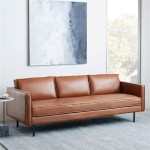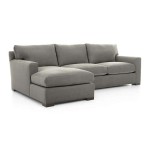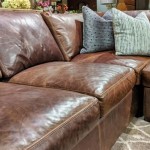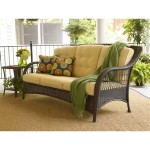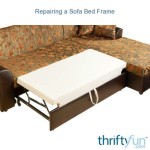Average Three Seater Sofa Length: A Comprehensive Guide
The three-seater sofa represents a cornerstone of living room furniture, providing ample seating without overwhelming the space. Determining the average length of a three-seater sofa is not a simple matter of adhering to a single, fixed dimension. A variety of factors influence the overall size, including style, design elements, armrest width, and the manufacturer's specific proportions. Therefore, understanding the general range and the elements that contribute to variations is crucial when selecting a sofa for a particular space.
This article delves into the typical length range of three-seater sofas, the factors that contribute to variations in size, and how these dimensions impact space planning. This knowledge empowers individuals to make informed decisions when purchasing furniture, ensuring that the chosen sofa complements the room's dimensions and aesthetic, while fulfilling its intended purpose.
Understanding the Typical Length Range
While pinpointing an exact "average" length is difficult, a three-seater sofa typically ranges from 75 to 90 inches (approximately 190 to 230 centimeters). This range encompasses a broad spectrum of designs, from more compact, minimalist models to larger, more generously proportioned sofas. The majority of three-seater sofas fall within this range, offering a comfortable seating arrangement for three adults.
It is important to acknowledge that this is a general guideline. Some manufacturers may deviate slightly based on their design philosophy or the intended market. Luxury or high-end sofas might exceed the 90-inch mark to provide extra comfort and visual impact. Conversely, sofas designed for smaller apartments or modern, minimalist aesthetics may be closer to the 75-inch end of the spectrum. Therefore, always verify the precise dimensions provided by the manufacturer before making a purchase.
The term "three-seater" itself can be somewhat ambiguous. It generally implies that the sofa is intended to comfortably accommodate three adults side-by-side. However, the actual seating capacity can vary based on the individuals’ sizes and the sofa's design. A sofa with wider armrests or a more sculpted back might offer less usable seating space than a model with narrower arms and a straighter back. Therefore, it’s recommended to physically test the sofa or carefully review detailed product specifications, including seat width, to assess its actual seating capacity.
Key Factors Influencing Sofa Length
Several factors play a significant role in determining the final length of a three-seater sofa. Understanding these factors allows for a more nuanced approach to selecting the right size for your needs. These factors are not mutually exclusive; they often interact to determine the sofa's overall dimensions.
Armrest Style and Width: The design of the armrests contributes substantially to the overall length. Rolled arms, for example, typically extend further outward than track arms, adding several inches to the sofa's overall width. Similarly, wider armrests obviously increase the overall length compared to narrow or armless designs. Some sofas feature oversized or decorative armrests, designed to make a bold statement, which can significantly increase the sofa's footprint. The choice of armrest style is not merely aesthetic; it directly impacts the amount of space the sofa occupies.
Back Style and Height: The height and angle of the sofa's back also influence the perceived and actual length. A high-backed sofa might appear larger and more imposing, even if its overall length is similar to a low-backed model. Furthermore, the angle of the backrest can affect the usable seat depth. A deeply reclined back might necessitate a longer seat depth to ensure comfortable seating, thereby increasing the overall length of the sofa.
Frame Design and Construction: The underlying frame of the sofa dictates its structural integrity and affects its overall dimensions. Some manufacturers prioritize a minimalist frame to reduce bulk, while others might opt for a more substantial frame to enhance durability. The design of the frame influences not only the length but also the overall weight and stability of the sofa. Sofas with exposed legs might appear visually lighter than those with a skirted base, even if their overall length is identical.
Upholstery and Cushion Fill: While not directly impacting the external dimensions, the upholstery and cushion fill contribute to the perceived size and comfort of the sofa. Thicker, more plush upholstery can make a sofa appear larger and more inviting. Similarly, overstuffed cushions can slightly expand the overall footprint of the sofa. The choice of upholstery and cushion fill also affects the sofa's weight and how easily it can be moved.
Design Style: Different design styles often adhere to specific proportional guidelines. For instance, mid-century modern sofas tend to feature clean lines and a more streamlined profile, often resulting in a shorter overall length compared to more traditional designs. Conversely, Chesterfield sofas, with their distinctive rolled arms and deep button tufting, typically occupy a larger footprint. The design style should be considered when determining the appropriate size for a particular room.
The Impact of Sofa Length on Space Planning
Selecting the correct sofa length is crucial for effective space planning. A sofa that is too large can overwhelm a room, making it feel cramped and uncomfortable. Conversely, a sofa that is too small might look insignificant and fail to provide adequate seating. Careful consideration of the room's dimensions and the sofa's intended placement is essential.
Measuring the Room: Before purchasing a sofa, it is essential to accurately measure the available space. Consider not only the length and width of the room but also the placement of doorways, windows, and other furniture. Create a scaled floor plan to visualize how the sofa will fit within the space and whether it will obstruct any pathways. This exercise can help prevent costly mistakes and ensure that the sofa complements the room's layout.
Considering Traffic Flow: The placement of the sofa should not impede the natural flow of traffic through the room. Ensure that there is sufficient space around the sofa for people to move freely without feeling constricted. A general rule of thumb is to leave at least 30 inches of clearance between the sofa and other furniture or walls. This allows for comfortable movement and prevents the room from feeling cluttered.
Balancing Proportions: The sofa should be proportional to the size of the room and the other furniture pieces. A large sofa in a small room can create a visual imbalance, while a small sofa in a large room might appear lost. Consider the scale of the other furniture, such as coffee tables, armchairs, and side tables, and choose a sofa that complements their size and style. Achieving a balanced and harmonious composition is key to creating an inviting and comfortable living space.
Using Furniture Placement Tools: A variety of online tools and apps can assist in visualizing furniture placement. These tools allow users to create virtual representations of their rooms and experiment with different furniture arrangements. They can be particularly helpful in determining the optimal sofa size and placement, ensuring that the chosen piece fits seamlessly into the existing space.
Considering Future Needs: When selecting a sofa, it is important to consider future needs. If the family is planning to expand or if the room is likely to be used for entertaining, a larger sofa might be a better investment. Conversely, if the space is limited or if the family is downsizing, a smaller sofa might be more appropriate. Thinking ahead can help prevent the need to replace the sofa prematurely and ensure that it remains a functional and stylish addition to the home for years to come.
Considering Style and Aesthetics: The chosen sofa length should complement the overall style and aesthetics of the room. A sleek, modern sofa might be a better fit for a contemporary space, while a more traditional sofa might be more appropriate for a classic setting. Consider the color, texture, and pattern of the sofa's upholstery and how it will interact with the existing decor. A well-chosen sofa can enhance the room's overall aesthetic and create a cohesive and inviting atmosphere.
Ultimately, determining the ideal length of a three-seater sofa requires a careful assessment of the available space, the intended use, and the desired aesthetic. While the average range provides a helpful starting point, it is essential to consider the specific factors that influence sofa dimensions and to prioritize accurate measurements to ensure a perfect fit.

Standard Sofa Dimensions

Entawak Sofa Blue Colour Three Seater

Anek 3 Seater Sofa Homefurniturecomforts

Sofa Dimensions For 2 3 4 5 6 Person Couches Diagrams Included

Buy Windsor Three Seater Sofa In Premium Blue Cotton Fabric Getmycouch

L Shape Sofa Dimensions How To Ensure It Fits Your Room

Buy Adam 3 Seater Sofa In Cotton Fabric Getmycouch

Buy Anabel Five Seater Sofa Set 3 1 Getmycouch

Sofa Dimensions A Ultimate Guide Homenish

Fargo 3 Seater Leather Sofa Customisable At Desired Living


